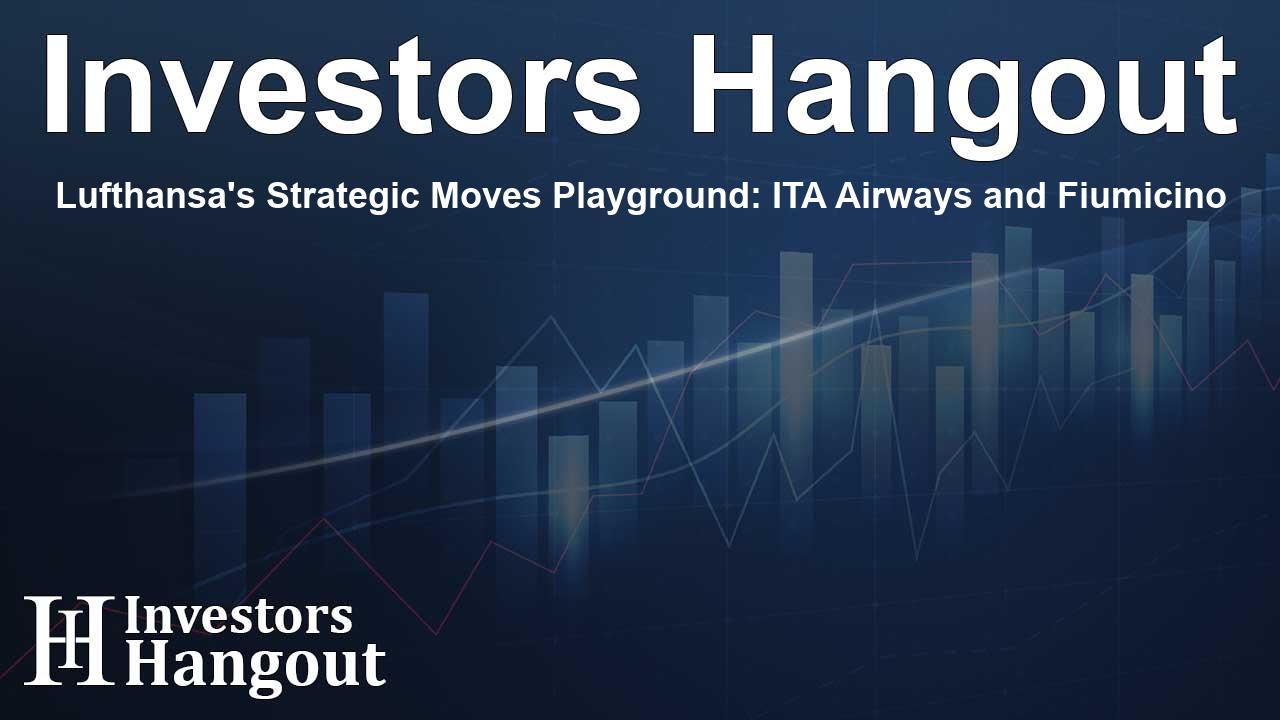Lufthansa's Strategic Moves Playground: ITA Airways and Fiumicino

Lufthansa's Strategic Moves Playground: ITA Airways and Fiumicino
Lufthansa is embarking on an ambitious journey to rejuvenate Italy's ITA Airways, a crucial element for the German airline's recovery, tightly linked to the expansion plans of Rome's Fiumicino Airport. The narrative reflects Lufthansa's broader strategy and the inherent challenges of achieving growth amidst complications at its operational hubs.
Link Between ITA Airways and Rome’s Fiumicino Airport
Embedded in the airline industry’s complexities, Lufthansa faces hurdles with ITA Airways' performance contingent upon the expansion of Fiumicino to accommodate increased passenger traffic. Recently, Lufthansa's CEO Carsten Spohr discussed these plans, emphasizing that the future of their investment primarily rests on the enhancements of Fiumicino that aim to double its capacity, thereby allowing for 100 million annual travelers.
Fiumicino Expansion Plans
This multiplier effect hinges on receiving approval from the Italian airport regulator, ENAC. ADR, the managing body of the airport under the ownership of infrastructure group Mundys, has pushed an 8 billion euro development proposal that is still under review.
The Industry Perspective
Lufthansa's strategy has drawn scrutiny from analysts. While Rome is viewed as a pivotal hub for growth, doubts emerge regarding ITA Airways' position against competitors like TAP and Air Europa. Experts, including Ruxandra Haradau-Doser from HSBC, underscore the competitive disadvantage faced by Lufthansa in establishing Rome as a significant hub for Latin America.
Mixed Reactions to Expansion Potential
Despite these concerns, other industry officials like Andrea Giuricin from TRA Consulting predict a surge in passengers traveling to Rome, estimating that Fiumicino may surpass 50 million travelers next year. This increase, buoyed by international tourist traffic and intercontinental flights, positions the airport favorably in the airline industry landscape.
The Cost Advantage of Fiumicino
The airport’s streamlined business model is another attractive feature, with operational costs significantly lower than in Frankfurt, making it an appealing choice for carriers handling medium-range aircraft. Notably, costs incurred at Fiumicino can be 30% to 90% less than at other major European airports.
Traveler Experience and Infrastructure Challenges
Despite accolades, such as being named Europe’s best airport, travelers express that improvements are needed—specifically, regarding connections to central Rome, approximately 30 kilometers away. Brazilian tourist Felipe Paiva echoed this sentiment, calling for greater infrastructure to enhance the travel experience.
Addressing the Risks in Expansion and Investment
As Lufthansa ventures forward with its investment in ITA Airways, the reliance on Fiumicino for expansion brings inherent risks. Lufthansa has grappled with rising labor costs, resulting in profit warnings this year. Analysts caution that the investment might not be the definitive solution Lufthansa seeks.
The Business Traveler Challenge
Further complicating matters, experts highlight that while Rome attracts leisure travelers, it may not naturally serve the core business traveler demographic. Aviation analyst James Halstead suggests Milan remains the true hub for business activities, pointing out the geographic and political nuances that position Milan in a more favorable location.
Future Outlook and Direction for Lufthansa
The future of Lufthansa's strategy revolving around ITA Airways and Fiumicino points toward navigating uncertainties. The political landscape, especially concerning Prime Minister Giorgia Meloni's administration, has shown a lack of resistance to Fiumicino's growth. Still, competition from Milan underlines a complex scenario for Lufthansa in maximizing its potential in Italy.
Concluding Thoughts
Ultimately, Lufthansa’s investment in ITA represents not just a chance for revival but also a multifaceted challenge. The combined dynamics of operational costs, competitive positioning, and regulatory approvals will delineate the path for Lufthansa in Italy's competitive aviation landscape.
Frequently Asked Questions
What is the significance of Fiumicino Airport for Lufthansa?
Fiumicino Airport is crucial for Lufthansa's strategy as it aims to expand ITA Airways, offering opportunities for increased passenger capacity and growth in international travel.
How does Lufthansa's investment in ITA Airways affect its operations?
The investment in ITA Airways is intended to revitalize Lufthansa's operations by capitalizing on the existing infrastructure and potential growth at Rome's Fiumicino Airport.
What challenges does Lufthansa face with Fiumicino's expansion plans?
Challenges include regulatory approvals from ENAC and market competition, notably with airlines positioned in Milan and neighboring regions.
How have rising costs impacted Lufthansa's strategy?
Rising labor costs have led Lufthansa to issue profit warnings, prompting scrutiny over the viability of its investment in ITA and the associated risks in expanding operations.
What future developments could influence Lufthansa’s plans in Italy?
Future developments at Fiumicino, regulatory decisions, and overall market dynamics in both Rome and Milan will significantly influence Lufthansa's operational strategy in Italy.
About Investors Hangout
Investors Hangout is a leading online stock forum for financial discussion and learning, offering a wide range of free tools and resources. It draws in traders of all levels, who exchange market knowledge, investigate trading tactics, and keep an eye on industry developments in real time. Featuring financial articles, stock message boards, quotes, charts, company profiles, and live news updates. Through cooperative learning and a wealth of informational resources, it helps users from novices creating their first portfolios to experts honing their techniques. Join Investors Hangout today: https://investorshangout.com/
Disclaimer: The content of this article is solely for general informational purposes only; it does not represent legal, financial, or investment advice. Investors Hangout does not offer financial advice; the author is not a licensed financial advisor. Consult a qualified advisor before making any financial or investment decisions based on this article. The author's interpretation of publicly available data shapes the opinions presented here; as a result, they should not be taken as advice to purchase, sell, or hold any securities mentioned or any other investments. The author does not guarantee the accuracy, completeness, or timeliness of any material, providing it "as is." Information and market conditions may change; past performance is not indicative of future outcomes. If any of the material offered here is inaccurate, please contact us for corrections.